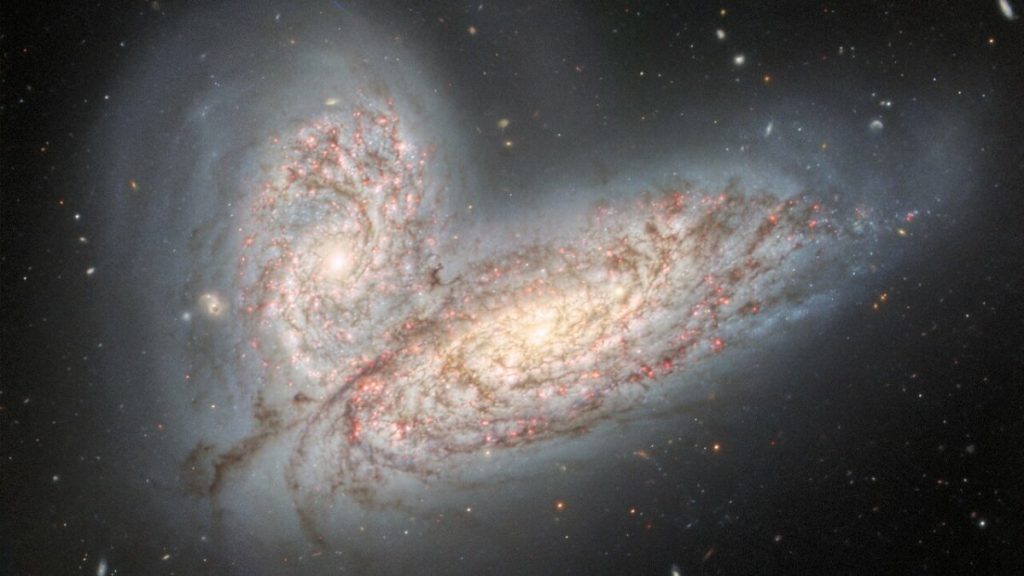The story of space is a story of collisions.
Sometimes, a meteor plummets through Earth’s atmosphere and slams into a doghouse. Sometimes stars crash into one another, violently. Other times, two dazzling spiral galaxies collide.
Hawaii’s Gemini North telescope, atop the towering volcano Mauna Kea, recently captured a brilliant view of the galaxies NGC 4568 and NGC 4567 before they collide. In the image, the spiraled objects are still largely unaffected as they draw closer to one another; their brilliant centers are some 20,000 light-years apart.
“Those placid conditions, however, will change,” the National Science Foundation’s National Optical-Infrared Astronomy Research Laboratory (NOIRLab), which operates some major U.S. telescopes, said in a statement.

Credit: International Gemini Observatory / NOIRLab / NSF / AURA
What happens next?
Over millions of years, the two galaxies will merge together. In fact, since the light from these distant galaxies took about 60 million years to get to us, we know this merger has already begun. But from our vantage point on Earth, their colossal gravitational forces will stoke wild changes as the galaxies distort and produce bounties of new stars, NOIRLab explains. It will be a long, 500-million-year mixing process. The ultimate product, according to intensive galactic observations and computer simulations, will be a single “elliptical galaxy,” which can be spherical or perhaps look more like a crushed sphere.
Such mergers of dazzling spiral galaxies are common in the cosmos. Why, it’ll even happen to us, too.
“This merger is also a preview of what will happen when the Milky Way and its closest large galactic neighbor the Andromeda Galaxy collide in about 5 billion years,” NOIRLab wrote.
Want more science and tech news delivered straight to your inbox? Sign up for Mashable’s Top Stories newsletter today.

